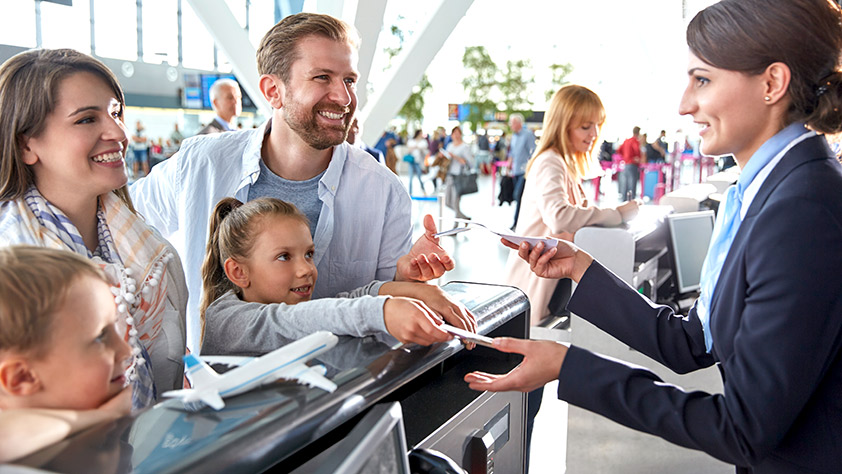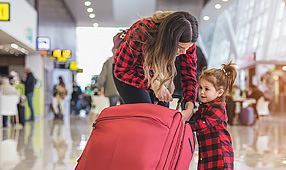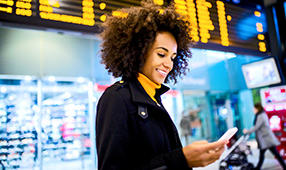Congratulations! You just got a great price on your plane ticket! Now don’t let that bargain get negated by tons of fees and expenses you’ll encounter on your trip.
Passengers paid an estimated $6 billion in fees to U.S. airlines last year, from big-ticket items such as baggage and cancellation fees to much smaller amounts that some airlines charge for blankets and pillows.
Some of these fees can be easily avoided: Don’t pay extra for a blanket, and bring a sandwich instead of buying the in-flight meal.
Other charges, such as baggage fees, can be impossible to avoid on many trips. A survey by travel website Airfarewatchdog found that baggage fees were the most hated by passengers—48% of respondents listed it as their least favorite—mainly for that reason.
Air travel consultant Nicholas Kralev, author of Decoding Air Travel, urges frequent fliers to gain elite status on one of the major airlines because perks usually include the waiver of at least some baggage fees.
“Short of elite status, the most common way to avoid some fees is through co-branded airline credit cards,” Kralev says. “They usually come with a free checked bag. Some also include access to priority check-in, security and boarding, and others even offer lounge access.”
If you don’t have a co-branded airline credit card, you can still earn rewards with a flexible rewards credit card.
12 typical airline fees that can really add up
Here are some of the most common fees that can creep up on you and put a big dent in your travel budget (be sure to check with individual airlines for their most up-to-date fee information):
1. Ticket change: When a last-minute emergency forces you to change your non-refundable flight, you don’t lose your entire investment. But rebooking can cost you somewhere between $50 and $200. Evaluate the price difference between refundable and non-refundable flights to determine upfront which option makes the most sense for you.
2. Curbside check-in: Some airlines still offer this convenience for free, although you have to tip the porters (at least $1 per bag). Those that do charge, such as JetBlue, have a fee of $2 per bag—and you still need to tip. Enjoy this free service while it lasts.
3. Baggage: These vary according to airline, but most now charge around $30 for the first checked bag, with many charging more for a second bag and much more for bags beyond that. Fees for international flights can be different, with some airlines taking the first checked bag for free, while extra bags can cost more than they do on domestic flights. Your best option here is to pack sensibly: Mix and match a few items of clothing, and plan to do laundry at your destination, if necessary.
4. Oversized baggage: Overweight (more than 50 lbs.) or oversized bags (definitions vary; check with the carrier) can get pricey, with many airlines charging at least $75 per bag. To avoid getting socked with this oversized fee, measure your suitcase before you start packing, and weigh your fully packed bag on your bathroom scale before you head to the airport.
5. Carry-on baggage: Some airlines have started charging for carry-on bags. Spirit, Frontier and Allegiant charge for them, with fees ranging from about $10 to $100 (on average, expect a $25 to $35 fee). Airlines have also gotten much stricter on what they’ll accept as carry-on bags and are tougher on restricting each traveler to one carry-on and one “personal” bag. On international flights, you may find that you’re allowed to carry on only one bag, which means you’d have to check the other one—and pay a luggage fee on it. Pack accordingly.
6. Pet transport: Airlines limit the number of in-cabin pets per flight as well as the size and weight of the pet carrier. Fees start at about $100 for a one-way flight. Fees for transporting pets in cargo are higher still and usually depend on weight. Travel with pets only if you have to; research boarding or pet-sitting fees, or ask a nice neighbor to care for your pets while you’re gone.
7. Priority boarding: Without elite status of co-branded credit cards, which typically include this service as a free perk, you’ll be lucky to pay only $5 for priority boarding. Unless you really need to get on the plane right away, skip this luxury.
8. Wireless access: In-flight Wi-Fi isn’t available on all airlines, and it’s not available on all flights on carriers that do offer the service. Charges can vary according to the length of the flight: A one-way charge of $5 is standard, but the fee can be as high as $18 on a carrier such as United. Again, unless you absolutely need to be online mid-flight, skip this luxury.
9. Airplane food and beverage: For the most part, non-alcoholic beverages are still complimentary. Food and alcoholic beverages usually are available for a fee, typically less than $10. You may be better off packing your own food—such as a peanut butter and jelly sandwich—or grabbing a cheaper sandwich at a fast-food restaurant on your way to the airport.
10. Blankets and pillows: Still free (but not always present) on most airlines, these amenities can cost anywhere from $5 to $10+ on airlines that charge for them (JetBlue, Virgin America and others). If you like to sleep on planes, consider investing in a small inflatable pillow. Instead of renting a blanket, wear a cardigan that you can easily take off while seated and store in your carry-on bag.
11. Baggage cart: Although many airports provide free luggage carts in international arrival areas, most charge about $5 for carts at domestic arrivals. Pony up for a cart only if you really can’t get from the luggage carousel to the pick-up lane without help.
12. Airline lounge access: Membership in the clubs that give you access to these lounges—with their free drinks and other amenities—can cost north of $400. Platinum American Express cardholders have free access, but the card itself has a fee of $450. Co-branded credit cards may include a limited number of visits per year as a perk.












